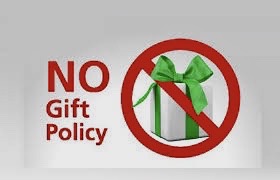
A large amount of estate litigation can often be based on whether monies or assets advanced from a parent to a child are a gift or a resulting trust.
It is important to remember that the law of resulting trusts applies to such situations.
Tam v Li 2022 BCSC 1412 reviewed the law relating to same:
When an owner of property gratuitously transfers property to another, a resulting trust is presumed to arise and can defeat the presumption of indefeasibility of title of real property: Freeland v. Farrell, 2022 BCCA 99 at para. 45, citing Donovan W.M. Waters, Mark R. Gillen & Lionel D. Smith, eds., Waters’ Law of Trusts in Canada, 5th ed. (Toronto: Thomson Reuters, 2021) at 414.
When assets are transferred gratuitously from one person to another, including from a parent to child, the law generally presumes that the person who made the transfer of property intended a trust, not a gift: Pecore v. Pecore, 2007 SCC 17 at para. 20; Kerr v. Baranow, 2011 SCC 10 at para. 19.
In Kerr, Justice Cromwell explained the concept of a resulting trust:
… [I]t is widely accepted that the underlying notion of the resulting trust is that it is imposed “to return property to the person who gave it and is entitled to it beneficially, from someone else who has title to it. Thus, the beneficial interest ‘results’ (jumps back) to the true owner”: Oosterhoff, at p. 25.
The presumption of a resulting trust can be rebutted through evidence that the person transferring the property intended a gift. If no gift was intended, a resulting trust is established and the person who gave no value holds the property in trust for the person who transferred the property. The actual intention of the person transferring the property at the time of the transfer governs: Kerr at paras. 18-19, citing Pecore at paras. 43-44.
In Hsieh v. Lui, 2017 BCCA 51 at para. 56, citing V.J.F. v. S.K.W., 2016 BCCA 186, the Court of Appeal described a gift as “a gratuitous transfer of property for which the donor expects no remuneration”. Citing Beaverstock v. Beaverstock 2011 BCCA 413 and Pecore, the Court in Hsieh affirmed that the transferor’s intentions are paramount in this examination.
In Beaverstock, at para. 10, the Court of Appeal identified seven factors first set out in Locke v. Locke, 2000 BCSC 1300, to determine whether there was a gift or a gratuitous transfer giving rise to a resulting trust:
a)whether there were any contemporaneous documents evidencing a loan;
b)whether the manner for repayment is specified;
c)whether there is security held for the loan;
d)whether there are advances to one child and not others, or advances of unequal amounts to various children;
e)whether there has been any demand for payment
f)whether there has been any partial repayment, and
g)whether there was any expectation, or likelihood, of repayment.
The Court of Appeal in Beaverstock explained that these factors are not substantive elements for which the party asserting that the gratuitous transfer gives rise to a resulting trust bears the burden of proof. The court must start with the presumption of a resulting trust and then determine the intention of the transferor. It is an error to collapse the analysis into a consideration of these factors because they are merely non-exhaustive items of circumstantial evidence relevant to the transferor’s actual intention.




